How to optimise space in a small office?
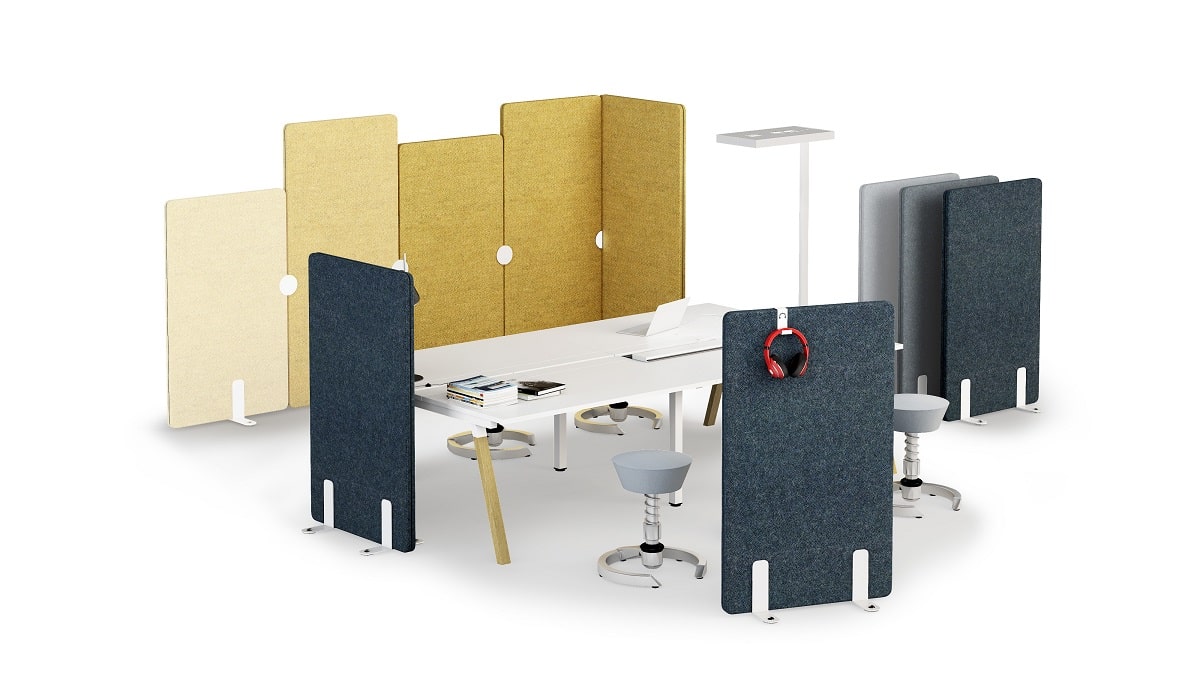
At a time when the cost of renting office space is rising and many employees are choosing to work in a hybrid model, companies are often opting for smaller offices. However, their arrangement poses unique challenges for designers. They need to balance the needs for a functional workplace, on the one hand, and for an aesthetically pleasing environment, on the other. Limited office space conceals great potential and does not have to mean compromising on work efficiency. Even a small office space can provide a comfortable environment, provided it is arranged in the right way. In this article, we explain how to optimise a small office by using the right furniture, lighting and design concepts. Read on to learn more.
Small office – huge possibilities. Analyse how the available office space is used
Analysing how the available space in your office is used is the starting point for creating an appropriate arrangement strategy. It is worth noting that when planned properly, a smaller company space allows for better interaction between employees and provides easy access to both individual and team working areas.
It is important to make thoughtful use of every square centimetre by the optimal arrangement of ergonomic office furniture, the use of multifunctional solutions and modern technology, among other things. Through analysing the needs of the team and the nature of the tasks performed, even the smallest office can be transformed into an effective and inspiring workplace.
Understanding the psychology of space – colours, lighting and furniture layout
The psychology of space shapes your experience of a place. This has its effects on the well-being, focus and efficiency of employees. The colours that surround you in the office can stimulate action, inspire or induce a state of relaxation. The hues of blue have a calming effect, while red and orange stimulate, raise optimism levels and promote interaction.
What our expert says
Lighting, both natural and artificial, affects our mood and ability to focus. Light that is too bright can be tiring for the eyes, while light that is too dim usually causes a drop in efficiency. The layout of furniture in a small office is no less important. Open spaces can encourage collaboration, while individual workstations help people focus on tasks. Understanding these factors and their impact on the human mind will help create an optimal workspace in a small office
– says Eliza Donek, Product Manager at Mikomax.
Tips for maximising small office space
Working in a small office where space is poorly used can lead to feelings of claustrophobia, overstimulation and general inefficiency in performing tasks. Therefore, improvements in the use of small spaces are essential.
Pay attention to the choice of materials
Light, bright and reflective materials can make a room appear larger and more spacious. The use of glass or light wooden surfaces can further bring freshness and modernity to the office.
Get rid of chaos and clutter
In a small space, every object counts double. Regular tidying, keeping items to a minimum and intelligent storage solutions for documents and other items ensure a comfortable working environment. The lack of clutter will make the available space more manageable. The use of wall shelves, wall-mounted cabinets or foldable tables saves valuable floor space.
Implement flexible working practices
Flexibility in work organisation is the key to making the most of a small office space. It is worth considering the introduction of a hybrid working system, where employees, depending on their needs or internal arrangements, have the possibility to perform their duties both in the office and remotely. With this solution, you can install fewer fixed workstations in the office, allowing a more efficient and thoughtful use of the available space.
Trends in the design of small office spaces
Contemporary offices are increasingly drifting away from traditional, rigid arrangements towards more flexible and innovative solutions. In response to rapidly changing market needs and employee expectations, designers are introducing new concepts that aim to maximise the potential of even the smallest spaces.
The Flex office
Trends in the design of small office spaces are evolving towards greater functionality, but also aesthetics and the psychological comfort of employees. Flex office is a concept that each office area should be multifunctional and easily adaptable to the current needs of users.
In this way, several work zones even in a small firm can be created, from individual work areas, to meeting rooms, to relaxation zones. Here, the use of modern technology and modular solutions is key, for example, the Ligo modular system which enables the user to create the space at will.
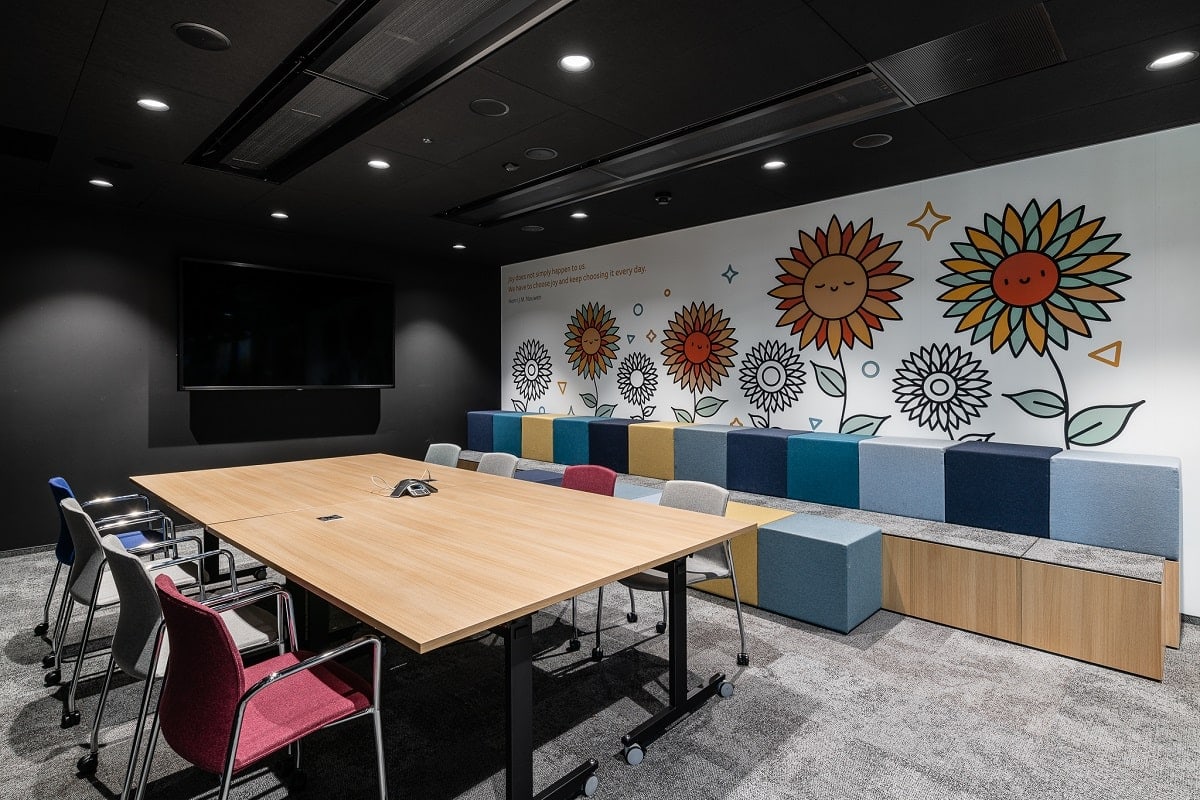
Coworking spaces
Coworking spaces, which offer a shared workspace for freelancers, start-ups or even larger companies, are becoming increasingly popular. They boast open floor plans, modular workstations and areas for focused work, relaxation or informal meetings. What’s more, firms more and more often recognise the benefits of renting coworking spaces: not only cutting the costs of maintaining a permanent office, but also the ability to use a ready-made infrastructure and the flexibility to adapt the workspace to their current needs.
Creating a special co-working area in a small office can provide many benefits. This arrangement encourages the exchange of ideas and the establishment of professional relationships between teams. With the help of well-thought-out furniture layout, the use of office acoustic partitions and the use of multifunctional interior items, you can create a coworking space that, despite its small size, promotes creativity, efficiency and relationship building between users.
Hot desking – flexibility in a small office
Hot desking is a strategy in which employees are not assigned fixed workstations, but use the spaces available at any given time. This approach translates into a better use of the space, adapting it to current needs and promoting collaboration and interaction between employees. In small offices, where every square metre is invaluable, hot desking using adjustable desks becomes a practical solution. Such furniture is height-adjustable for easy adaptation to the individual worker’s needs. This feature promotes ergonomics, as it allows both sitting and standing work.
Also worth reading: Why introducing hot desking in the office is worth it. How to do it well?
How do you turn a small office into a space that suits different ways of working?
Turning a small office into a space that suits different ways of working requires a creative approach to its layout and the use of modern furniture.
Using soft seating furniture in a small office
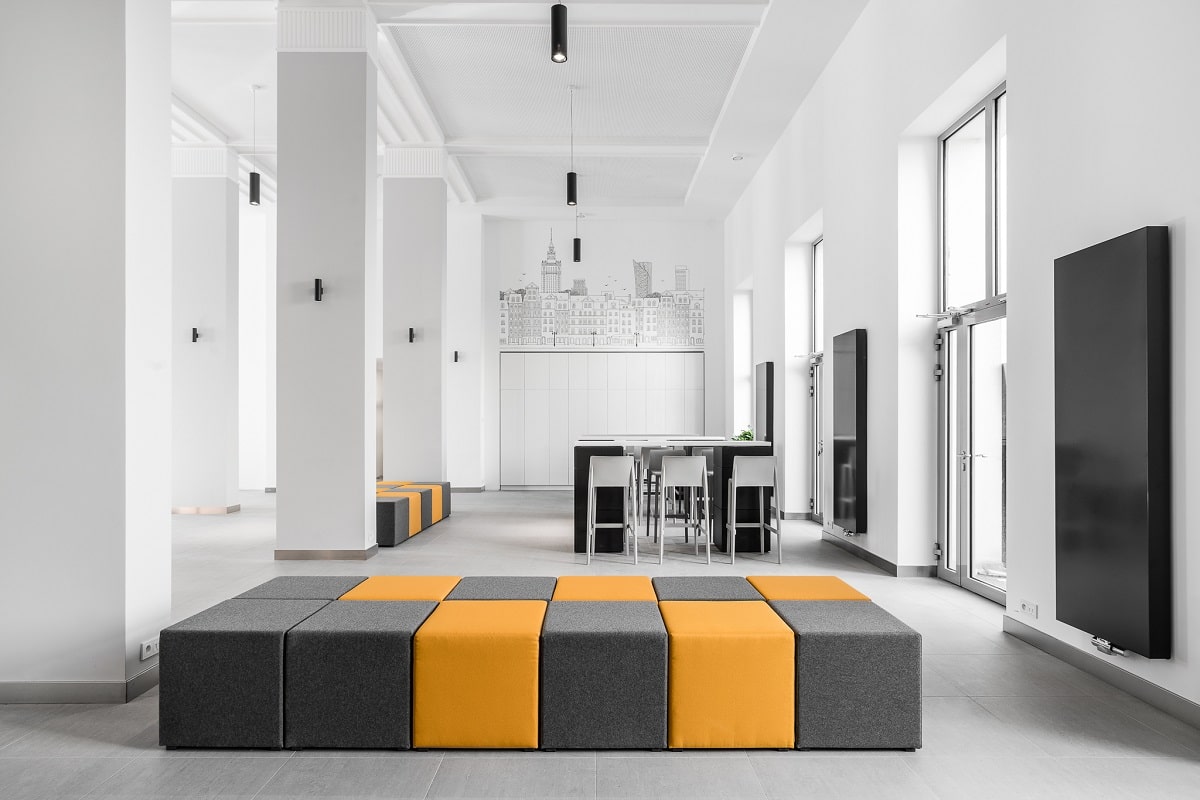
Soft seating furniture, designed with comfort and relaxation in mind, is on the rise in modern office settings. In small offices, they can serve several functions. The designer Packman sofas and armchairs, available with a choice of high or low backrests, will become the ideal place for informal meetings, short breaks or even slightly more informal brainstorming sessions. With the wide range of available colours, the furniture also brings a decorative aspect to the office and makes the interior more welcoming. The soft seating can also be easily rearranged, adapting the office space to suit current needs.
Mobile acoustic partitions: the allies of small offices
How do you turn a small office into a space that suits different ways of working? One great solution is the use of Soniq mobile acoustic partitions. Being reconfigurable both in a row or perpendicularly, these partition panels ensure that the interior of the office can be adapted quickly and flexibly to the individual needs of employees, without the need for costly renovations or rearranging furniture.
Not only do the mobile partitions reduce noise to create a comfortable working environment, but also offer the ability to divide space into areas for meetings, consultations or focused individual work. As a result, these innovative solutions help to transform a small office into a versatile working environment that adapts to a variety of professional demands throughout the day.
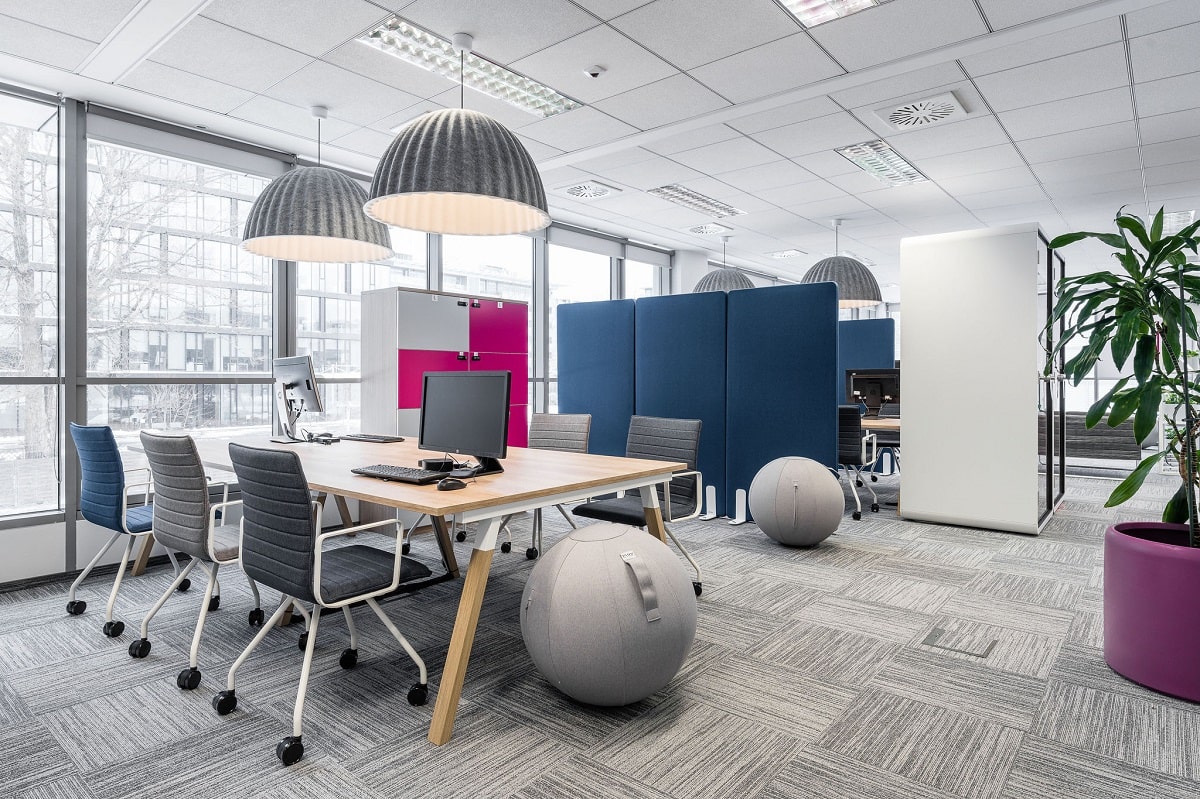
Featured article: Divide and conquer – with the SONIQ modular office wall system
Adjustable desks – flexibility and ergonomics
In both small and large offices, taking care of staff comfort by using electric or manual height-adjustable desks is worth the effort. Their main advantage is that they are height-adjustable, allowing both sitting and standing work. This gives users the flexibility to choose the position they work in, and further encourages them to change it throughout the day, which is not only good for health but can also increase efficiency.
Particularly in a hybrid working model, without assigned workstations, it is important that all employees can set their desks at a height that suits their needs. With Stand Up R desks, this can be done in one simple movement. In addition, they offer the option of choosing between an individual workstation (when the desk is lowered) or a multi-person project table (when raised), which improves their functionality in small offices.
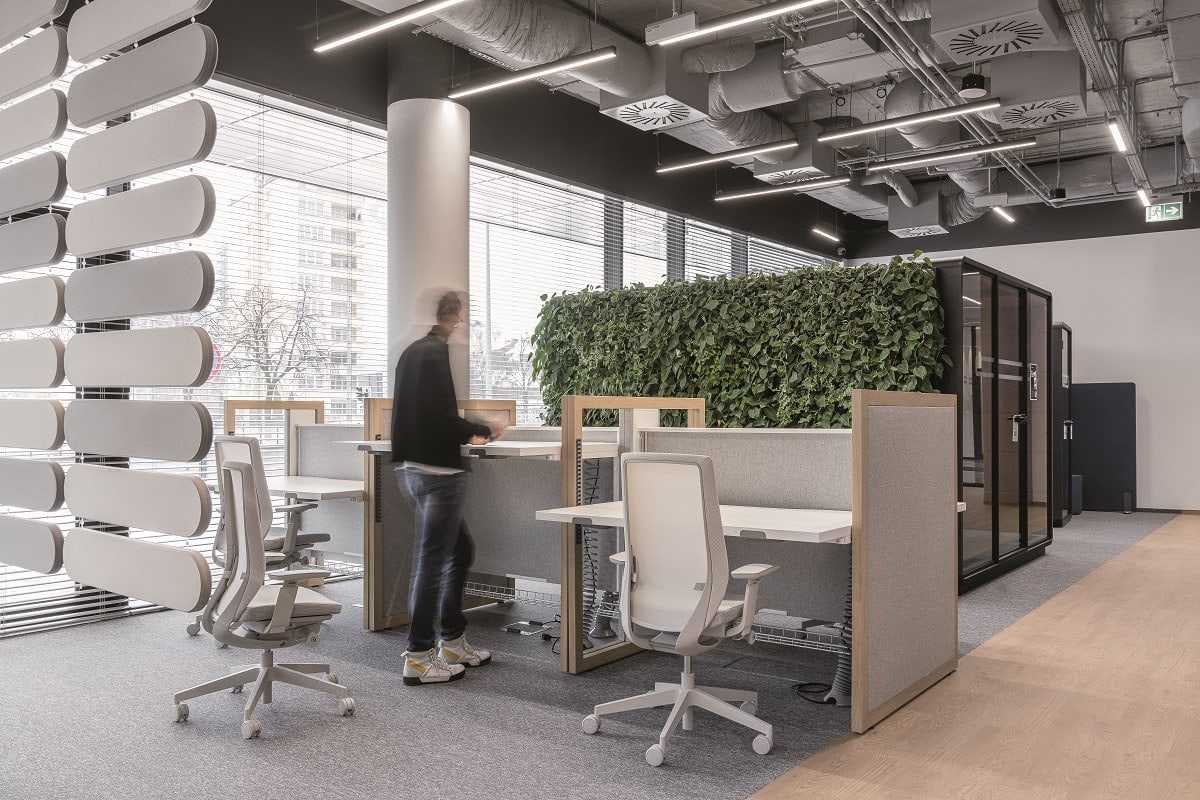
Modular furniture – space for personalisation
Optimising space in a small office can be a problem, but the use of modular furniture solves it. Its design offers the ability to fold and adjust them according to current needs, making them ideal for dynamic working environments. Users can adjust their own position easily and adapt the office layout in the way that works best for them. This personalisation range not only maximises the use of available space, but also allows employees to work in the way they most enjoy.
Would you like to make the most of every inch of your office?
Explore our range of office furniture for small office spaces >>
